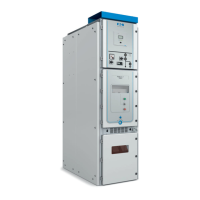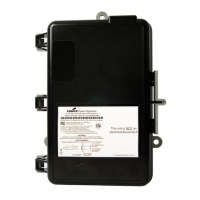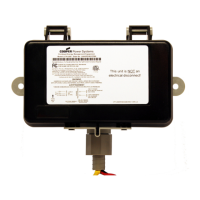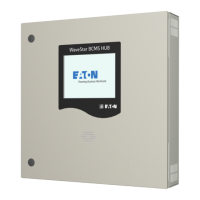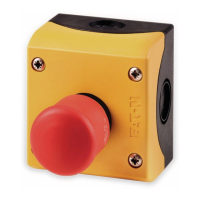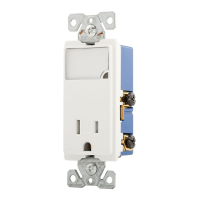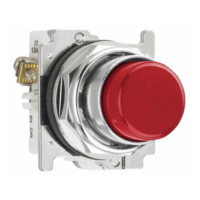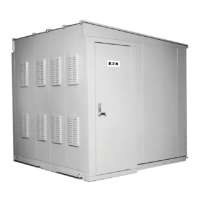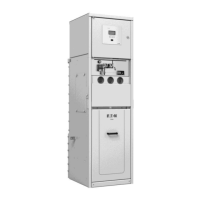TD03309002E For more information visit:
www.EatonElectrical.com
Technical Data
Effective: January 2005 Page
5
Storage, Handling,
Installation and
Maintenance of Controllers
Troubleshooting
Table 3. Contactor Troubleshooting Chart
Defect Cause Remedy
Contactor
Overheating Load current too high Reduce load. Use larger contactor.
Loose connections Clean discolored or dirty connections and retighten. Replace poorly crimped
lugs.
Overtravel and/or contact force too low Adjust overtravel, replace contacts, and replace contact springs as required to
correct defect.
Collection of copper oxide or foreign matter
on copper contact faces
Clean with fine file. Use Type 12 enclosure for dirty atmosphere.
Load is on in excess of 8 hours on copper
contacts
Change operating procedure. Check factory for more suitable contacts.
Ambient temperature is too high Reduce load. Provide better ventilation. Relocate starter. Use larger contactor.
Line and/or load cables are too small Install terminal block and run larger conductors between contactor and terminal
block.
Poor Arc Interruption Arc box not in place Install arc box.
Arc box damaged Replace broken or eroded insulating parts, arc horns, and grid plates. Clean or
replace insulating parts having a heavy coating of foreign conducting material.
Dirt or paint on arc horns or steel-grid plates Remove contaminating materials which may have accumulated on arc horns
and steel-grid plates.
Magnetic hardware substituted for non-
magnetic hardware in arc box and blowout
assemblies
Replace with correct hardware; brass or stainless steel as available.
Blowout coil reversed or shorted Replace with new blowout coil or correct defect by reversing coil.
Oil level is low or oil is contaminated (in oil-
immersed contactor)
Fill tank to proper level with fresh oil. Test at 28 kV.
Welding of Contacts Overtravel and/or contact force is too low Adjust overtravel, replace contacts, and replace contact springs as required to
correct defect.
Magnet armature stalls or hesitates at contact
touch point
Correct low voltage at coil terminals as coil draws inrush current.
Contactor drops open to contact-touch
position because of voltage dip
Maintain voltage at coil terminals. Install low voltage protective device,
sometimes called “Brownout Protector.”
Excessive contact bounce on closing Correct coil overvoltage condition.
Contacts rebound to contact-touch position
when opening
Correct mechanical defect in stop assembly. Correct mechanical defect in latch if
one is used.
Poor contact alignment Adjust contacts to touch simultaneously within 1/32 inch.
Jogging duty is too severe Reducing jogging cycle. Check factory for more weld-resistant contact material.
Use larger contactor.
Excessive inrush current Motor has locked rotor code letter greater than G. Most contactors are designed
for motors with code letters A through G. Therefore, use larger contactor. Check
factory for more weld-resistant contact material.
Vibration in starter mounting Move starter to location having less shock and vibration. Insulate starter form
shock and vibration. Provide more rigid support for starter.
Contacts
Contact Chatter Low voltage Check supply voltage, especially during starting. Check coil voltage rating.
Increase voltage or change coil rating as required.
Poor contact in control circuit Replace the contact or use holding-circuit interlock (3-wire control).
Broken shading coil Replace magnet and armature assemblies.
Welding Abnormal inrush current Use next larger size contactor or check for grounds, shorts, or excessive motor
load current.
Rapid jogging Install larger device rated for jogging service.
Insufficient contact pressure Replace contacts and springs, check contacts for abnormal wear or damage.
Low voltage preventing magnet from sealing Check supply voltage to coil, especially for momentary voltage dip during
starting.
Foreign matter preventing contacts from
closing
Clean contacts with freon. Contacts used at low current and voltage levels
should be cleaned with freon.
Vibration in starter mounting Insulate starter from shock and vibration.
Short circuit Remove fault and check to be sure fuse or breaker size is correct.

